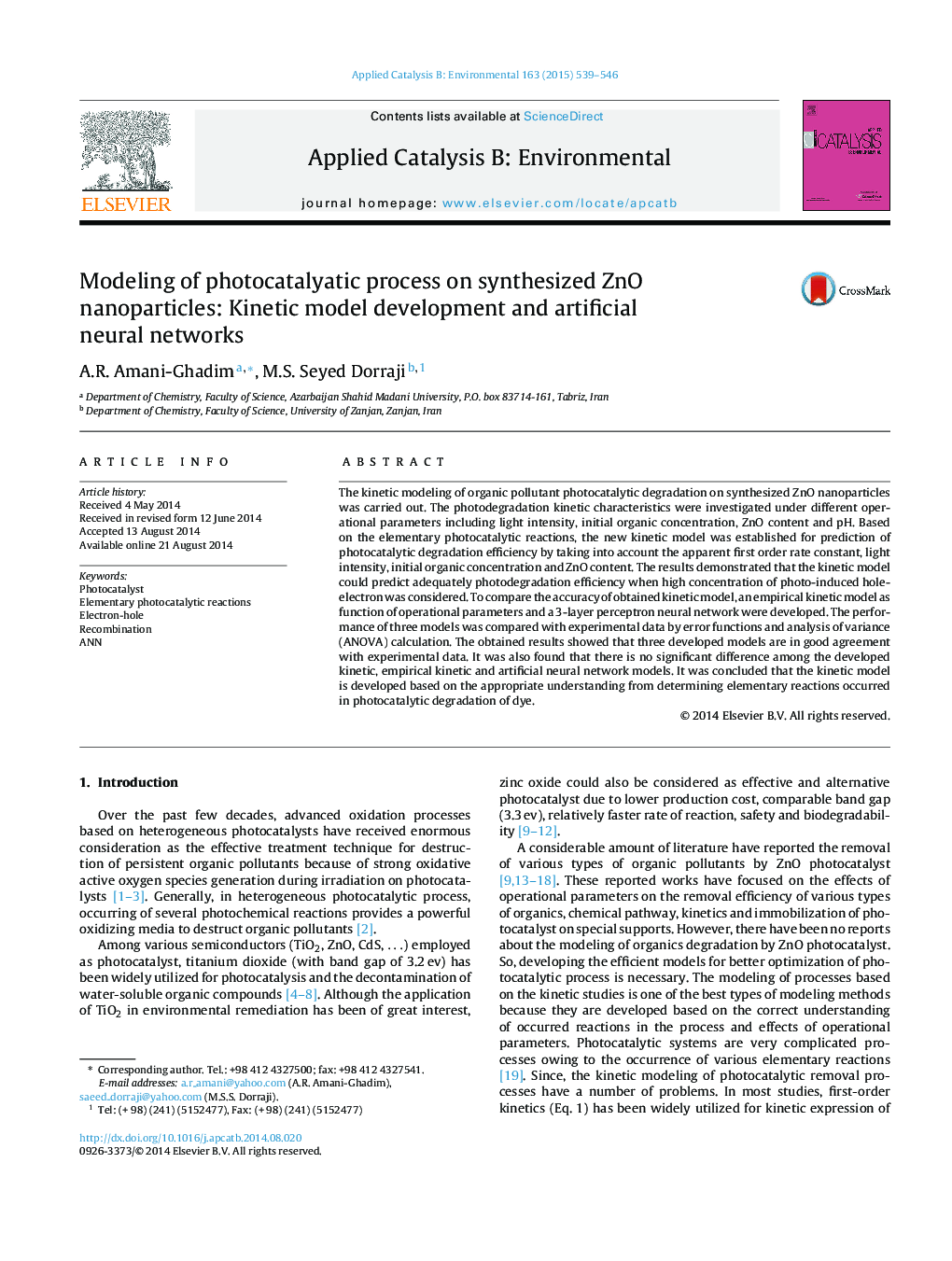| کد مقاله | کد نشریه | سال انتشار | مقاله انگلیسی | نسخه تمام متن |
|---|---|---|---|---|
| 44907 | 46375 | 2015 | 8 صفحه PDF | دانلود رایگان |

• Photocatalytic degradation of an organic matter on ZnO nanoparticles was modeled.
• New kinetic model was established based on the elementary photocatalytic reactions.
• High concentration of photoinduced electron-hole was considered in kinetic model.
• Kinetic model was compared with 3-layer perceptron neural network model.
The kinetic modeling of organic pollutant photocatalytic degradation on synthesized ZnO nanoparticles was carried out. The photodegradation kinetic characteristics were investigated under different operational parameters including light intensity, initial organic concentration, ZnO content and pH. Based on the elementary photocatalytic reactions, the new kinetic model was established for prediction of photocatalytic degradation efficiency by taking into account the apparent first order rate constant, light intensity, initial organic concentration and ZnO content. The results demonstrated that the kinetic model could predict adequately photodegradation efficiency when high concentration of photo-induced hole-electron was considered. To compare the accuracy of obtained kinetic model, an empirical kinetic model as function of operational parameters and a 3-layer perceptron neural network were developed. The performance of three models was compared with experimental data by error functions and analysis of variance (ANOVA) calculation. The obtained results showed that three developed models are in good agreement with experimental data. It was also found that there is no significant difference among the developed kinetic, empirical kinetic and artificial neural network models. It was concluded that the kinetic model is developed based on the appropriate understanding from determining elementary reactions occurred in photocatalytic degradation of dye.
Figure optionsDownload as PowerPoint slide
Journal: Applied Catalysis B: Environmental - Volume 163, February 2015, Pages 539–546